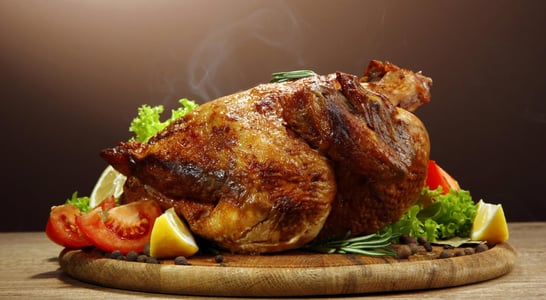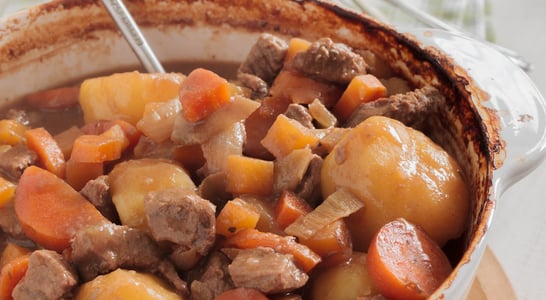
National Roast Suckling Pig Day
A mouthwatering centerpiece, crispy on the outside, tender inside, its aroma filling the air - a feast fit for a king.
In advance of that tasty Christmas ham, this event encourages the making (and eating!) of mouth-watering and tender cuts of pork. National Roast Suckling Pig Day brings ancient traditions into the forefront on a day for chefs, culinary hobbyists and food lovers of all kinds!
How to Celebrate National Roast Suckling Pig Day
Learn More About Roast Suckling Pig
While many food days are all about simply encouraging the taste buds, some also come with the added bonus of offering a lesson in culture and tradition. Roast suckling pig can be traced back to a variety of different places and cultures.
In certain Latino or Asian cultures, such as Cuba, Puerto Rico, Spain and the Philippines, roast suckling pig is often considered to be a national dish – especially when cooked over charcoal. But there are other places that fix this dish, including different European countries as well as parts of the United States.
Enjoy a Roast Suckling Pig
To celebrate this day, some people might want to find a traditional recipe to make a pig for the whole family. Invite a few friends over as well, serve it up as soon as it is done and enjoy eating it as a group.
There isn’t a better way to celebrate this day than to have the meal it was named after, and since it is close to that time of year, why not have a bit of eggnog with the meal?
History of National Roast Suckling Pig Day
National Roast Suckling Pig Day was founded by lovers of this food to bring attention to and celebrate it in all its glory! For those who do not know, a suckling pig is a piglet fed on its mother’s milk. In culinary contexts, a suckling pig is slaughtered between the ages of two and six weeks. It is traditionally cooked whole, often roasted, in various cuisines.
There are many ancient recipes for suckling pig from Roman and Chinese cuisine. Since the pig is one of the first animals domesticated by human beings for slaughter, many references to pigs are found in human culture.
This dish is usually prepared for special occasions and gatherings. The meat from suckling pig is pale and tender and the cooked skin is crisp and can be used for pork rinds The texture of the meat can be somewhat gelatinous due to the amount of collagen in a young pig.
There are many ancient recipes for suckling pig from Roman and Chinese cuisine. Since the pig has been one of the first animals domesticated by humanity for slaughter, many references to pigs are found in human culture. The suckling pig, specifically, appears in early texts such as the sixth-century Salic law.
Bonus: Recipe for Roast Suckling Pig
Here’s what Roast Suckling Pig consists of, along with a recipe:
- One (Twelve to Eighteen Pound) whole suckling pig
- Fifteen quarts of water
- Six and a half cups of kosher salt
- Four and a half cups of granulated sugar
- A half cup of vegetable oil, for basting
Here are the instructions on how to cook the Suckling Pig
- Rinse pig in cold water and set aside. Line a 32-gallon garbage bag with 2 more 32-gallon garbage bags. Place water, salt, and sugar in the tripled-up garbage bags and stir to dissolve, taking care not to puncture the bags. Place pig in the bags, remove excess air, and tie tightly. Place in a 15-quart container in the refrigerator and brine 12 to 24 hours, turning once.
- Heat the oven to 250°F and arrange a rack on the lowest level. Remove the pig from the brine and pat dry with paper towels; discard brine. Lay the pig on its side and stuff the interior with 15 to 20 large (20-inch-long) pieces of lightly crumpled aluminum foil until it’s filled out. (This will prevent caving during roasting.)
- Transfer the pig to a baking sheet fitted with a roasting rack. Arrange it stomach down with the back legs tucked underneath and pointing forward, and the front legs tucked underneath and toward its sides. (You may need to add more foil if it is not sitting properly.) Prop up the head with foil or a large ramekin to keep the back aligned. Cover tightly with aluminum foil and place in the oven.
- Roast the pig, rotating once, until it reaches 130°F, about 2 1/2 to 3 hours. Remove the foil, baste with oil, and increase the oven temp to 400°F.
- Roast, basting every 15 minutes with oil and rotating once more, until the internal temperature reaches 160°F, about 45 minutes to 1 hour more. (If the ears or snout become too brown, cover with foil.) Remove from the oven and let rest 20 minutes before carving.
Also on ...
View all holidaysBake Cookies Day
Make a batch of your favorite biscuits, experiment with imaginative cookie cutter shapes or organize a bake sale for charity.
World Arabic Language Day
Like a melody from a distant land, this language dances with intricate calligraphy, inviting exploration into its rich tapestry.
We think you may also like...
National Chicken Month
Fry it, roast it, stick it in a soup…pick your favorite way to eat chicken, and have fun trying out new recipes for this versatile and tasty bird.
Global Scouse Day
A cherished culinary tradition, warm and hearty, born from the heart of a vibrant city, nourishing body and soul through generations.








